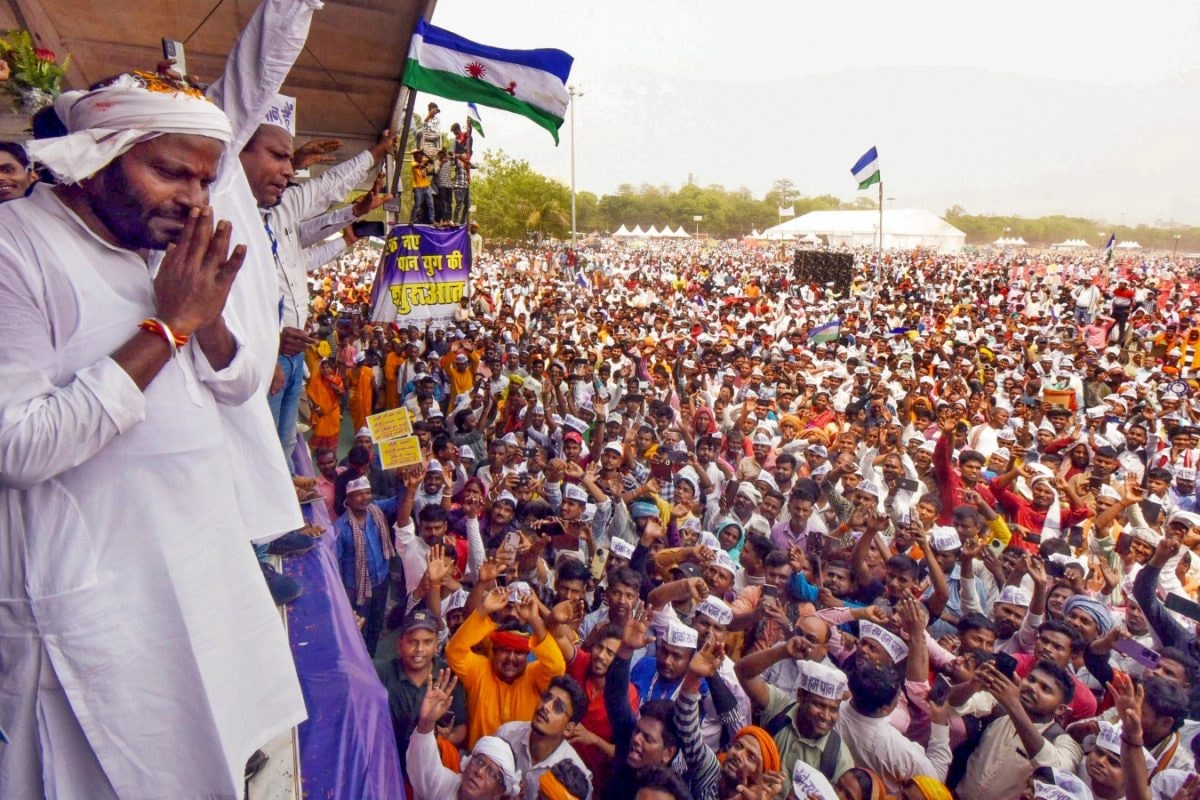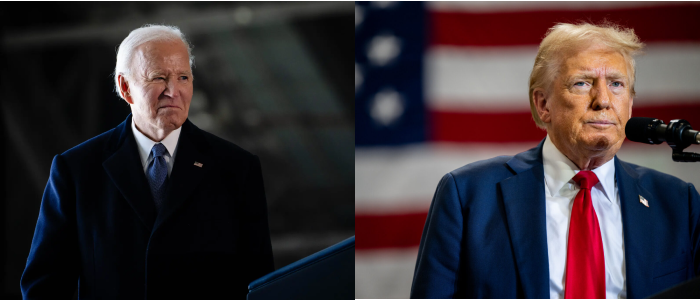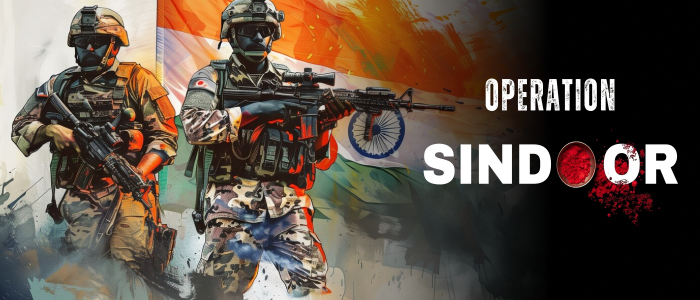Bihar’s politics, like its society, runs deep. And caste, for all its contradictions and complexities, remains its most enduring and defining root Gandhi Maidan in Patna, a historic site that once echoed with slogans of freedom, socialism, and Jayaprakash Narayan’s call for total revolution, recently witnessed a telling spectacle—a massive rally led by IP Gupta under the banner of the ‘Paan’ Samaj. But this was no ordinary social congregation.
From the dais, Gupta thundered that since Independence, not a single MP or MLA had emerged from the Paan community, and that the time had come to demand political voice and visibility. One of the rally’s core demands was the re-inclusion of the Tanti-Tatwa Samaj—a sub-community of the Paans—into the Scheduled Caste list. The group had been reclassified as Extremely Backward Caste (EBC) by the Bihar government following a Supreme Court directive.

The rally’s turnout was not just impressive—it was a loud assertion of identity, grievance, and aspiration. In sharp contrast, a rally held just two days earlier by political strategist-turned-activist Prashant Kishor at the same Gandhi Maidan drew a muted response. Despite meticulous planning and a focus on governance, education, and employment, the gathering lacked the emotional and identity-driven fervour seen at the Paan Samaj event.
Kishor’s appeal to a broader “class" identity—one that seeks to transcend caste loyalties—failed to resonate. The difference in turnout underscored an uncomfortable truth: in Bihar, caste, not class, remains the more compelling axis of political mobilisation. This is hardly new.
Caste congregations have long served as socio-political tools for pressing demands—be it reservations, recognition, or representation. From Maratha agitations in Maharashtra to Gurjar protests in Rajasthan and Jat mobilisations in Haryana, such rallies are part of a broader national pattern. Some, like those of Tyagis in western UP or the Rajputs of the Karni Sena, are rooted more in pride than policy.
But many, like the Paan rally, are grounded in structural grievances. Bihar isn’t unfamiliar with caste congregations and movements. In the decades following Independence, marginalised communities often collaborated or aligned themselves with a dominant caste to build collective political power.
The Triveni Sangh of the early 20th century was a notable attempt to unite Yadavs, Kurmis, and Koeris—three dominant OBC groups—against upper-caste dominance. During the 1960s and ‘70s, the political narrative focused on the assertion of the backwards classes as a whole. The emphasis was on shared upliftment, not intra-group competition.
That equilibrium began to shift in the post-Mandal era. As political power consolidated among OBCs, internal hierarchies became more visible. Yadavs, empowered by the rise of the RJD, emerged as a dominant force, prompting other OBC groups like Kurmis and Koeris to feel increasingly marginalised.
It was a Kurmi Chetna Rally, held against the backdrop of this discontent, that catapulted Nitish Kumar into the role of chief dissenter and leader of the anti-Lalu forces. A similar pattern is now evident among Dalit communities. Initially united in the call for Scheduled Caste representation, the growing political prominence of the Paswans—especially through the LJP—has led other Dalit sub-groups, like Musahars, to seek distinct space through platforms like the Hindustani Awam Morcha (HAM).
These developments aren’t isolated. The Kanu Halwai rally at Miller High School ground echoed a similar mobilisation. From Kushwahas to Dhanuks, Ravidas to Rajbhars, many caste groups are reasserting their identity in the public-political arena.
The common thread is clear: identity politics in Bihar has returned to its most granular and emotive unit—jati. This phenomenon isn’t exclusive to Bihar. Across India, political parties once grounded in broad social justice movements have narrowed into caste-based outfits.
The Samajwadi Party in Uttar Pradesh, born of Lohia’s socialist ideals, has become increasingly identified with Yadav interests. In Karnataka, another socialist offshoot, the Janata Dal (Secular), once a farmers’ party, is now widely seen as a vehicle for Vokkaliga dominance. In Bihar, caste-aligned parties dot the political map—the Vikassheel Insaan Party (VIP) of Mukesh Sahni for the Nishads, LJP for Paswans, and HAM for Musahars.
Caste arithmetic has overtaken ideological cohesion. That caste-based voting persists is no accident. It stems from generations of structural exclusion and unequal access to power.
For many communities, caste is both shield and strategy—a means to secure attention, access, and accountability from the political system. It provides identity, safety, and a pathway for collective bargaining. And yet, there are those attempting to rewrite the script.
Figures like Prashant Kishor, former IPS Shivdeep Lande, and Pushpam Priya Chaudhuri are experimenting with issue-based, aspirational, or class-oriented politics. But their efforts remain on the margins. These experiments have yet to achieve critical mass—not due to a lack of vision, but because caste remains deeply embedded in the architecture of political mobilisation, leadership, and everyday social negotiation in Bihar.
As Bihar moves into another election cycle, the political significance of these jati-based mobilisations becomes even more pronounced. Parties are recalibrating their outreach strategies, candidates are rethinking their caste equations, and every public rally is being scrutinised through the lens of potential vote banks. For all the talk of development, Bihar’s electoral battlefield remains firmly anchored in identity.
Moving the political conversation from caste to class—or from identity to policy—will take more than idealism. It will require patient groundwork, credible leadership, and durable cross-caste alliances that acknowledge historical inequalities while building shared aspirations. That transformation is possible—but it’s not imminent.
For now, the chants at Gandhi Maidan are a reminder: Bihar’s politics, like its society, runs deep. And caste, for all its contradictions and complexities, remains its most enduring and defining root. The author is a BJP leader and author of ‘Broken Promises: Caste, Crime and Politics in Bihar’.
Views expressed in the above piece are personal and solely those of the author. They do not necessarily reflect News18’s views..
Politics

Opinion | Caste Lines Harden As Bihar Edges Toward Polls

Bihar’s politics, like its society, runs deep. And caste, for all its contradictions and complexities, remains its most enduring and defining root















